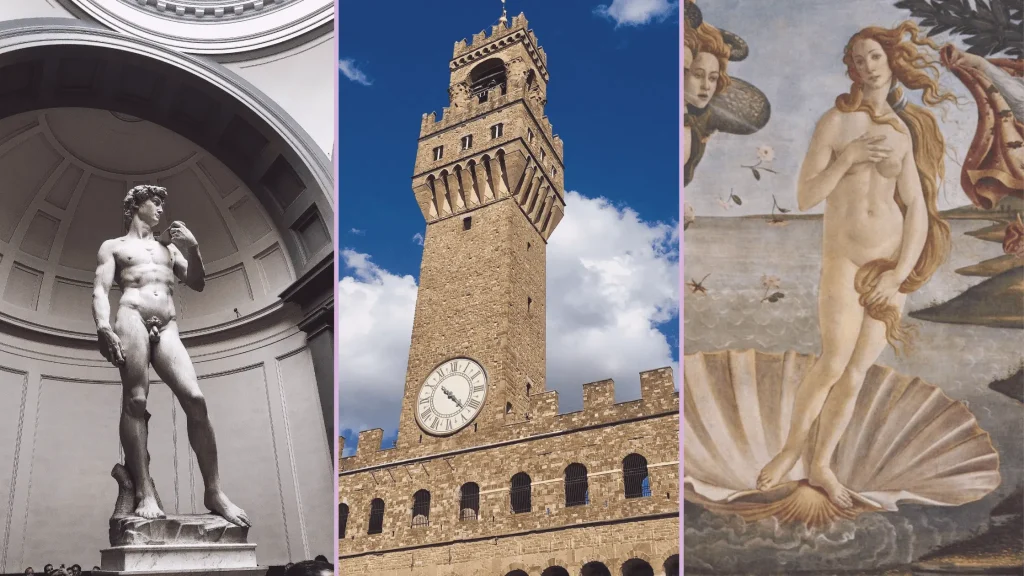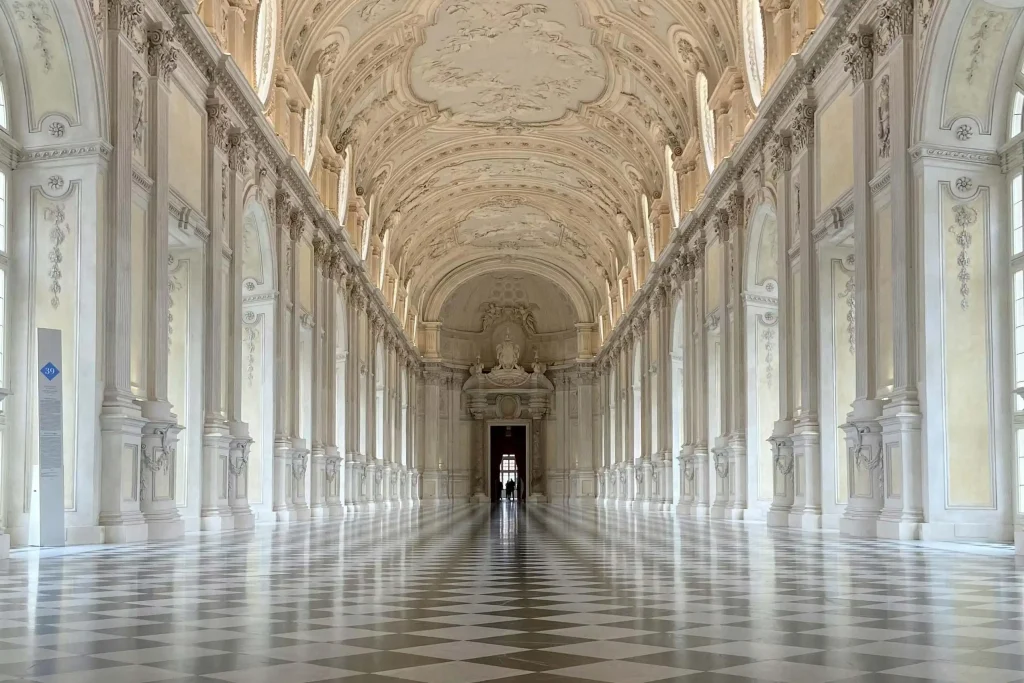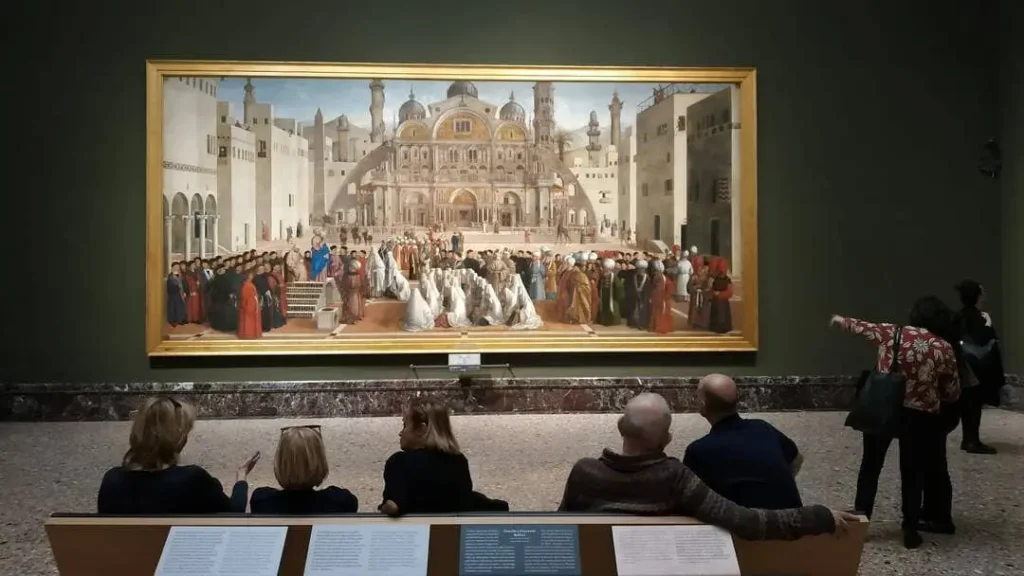
Dante Alighieri: discovering the legend
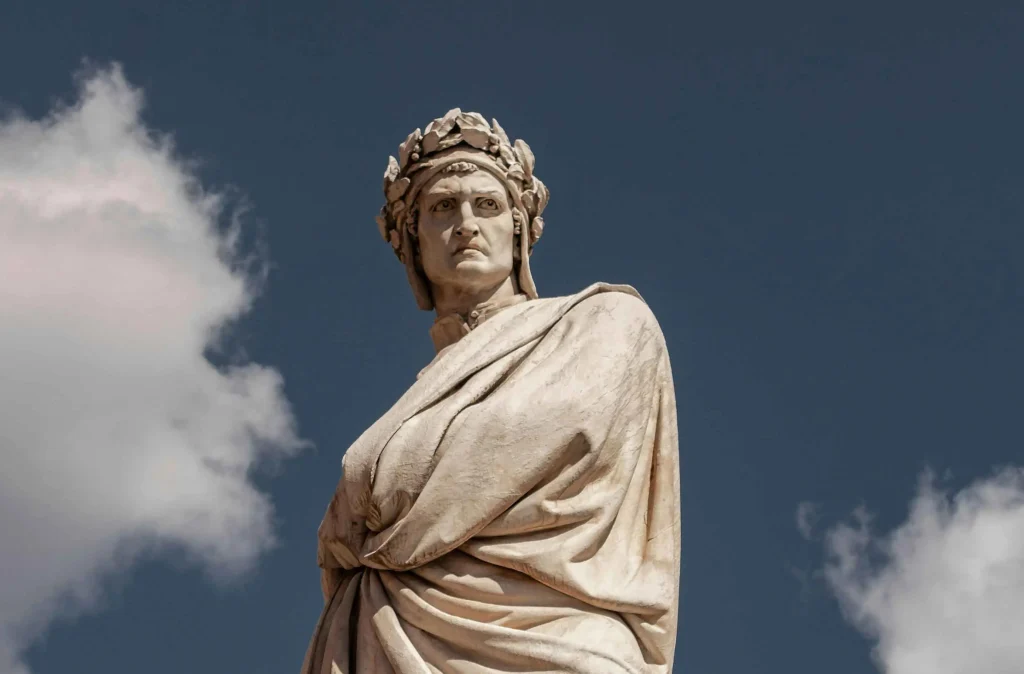
To mark the 700th anniversary of his death, Italy decided to celebrate Dante Alighieri on March 25, 2021, the date that coincides with the beginning of the journey to the afterlife described in “The Divine Comedy.” The day was called Dantedì. Who was Dante Alighieri? Let’s find out in this article.
“Midway upon the journey of our life
I found myself within a forest dark,
For the straightforward pathway had been lost”. Inferno, Canto I – The Divine Comedy
In 1321 the great poet Dante Alighieri left us. A full seven centuries later he is still remembered, and his world-famous books are the subject of study in countless institutes and schools of all types and levels.
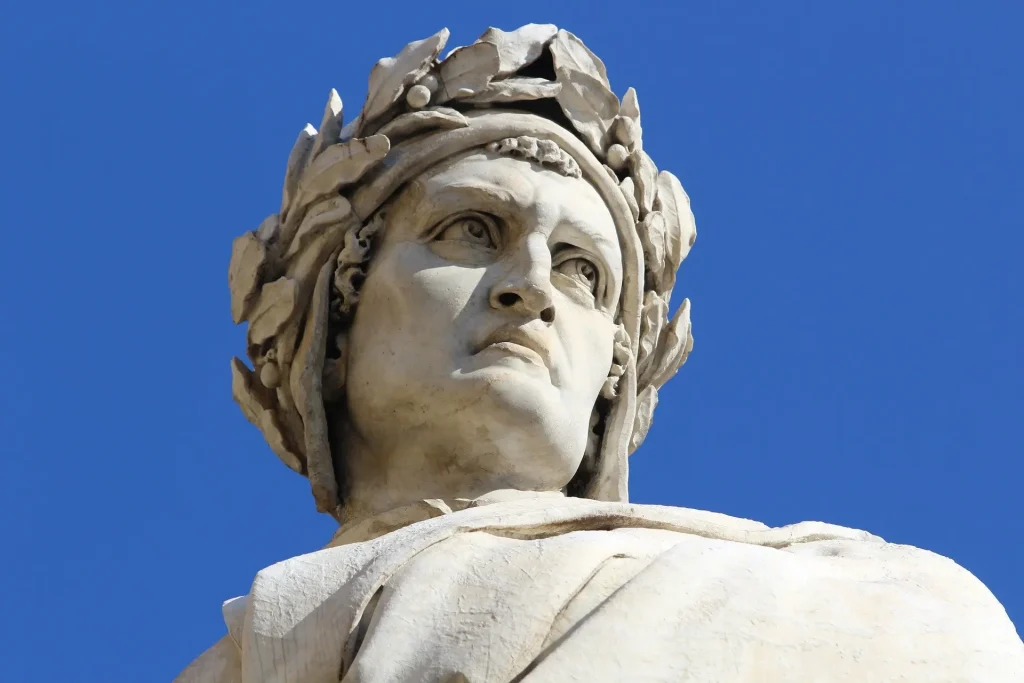
Who was Dante Alighieri?
Dante Alighieri was born in Florence in 1265. The exact day of his birth is not known, but it is assumed that little Dante came into the world between May 21 and June 21 of that year.
Baptized Durante di Alighiero degli Alighieri, he was known simply as Dante.
The Alighieri family was part of the minor Florentine nobility, so young Dante lived a life of wealth and ease.
He was not only a prominent linguist and philosopher, but also became involved in the political life of the period, which was characterized by clashes between the Guelph and Ghibelline factions.
Dante, who sided with the White Guelphs, was first condemned to exile (from 1301 to 1311, with brief periods spent in Verona, Bologna and Ravenna), and later sentenced to death.
The poet’s last home was the city of Ravenna, where he died on the night of September 13-14, 1321, a full 700 years ago.
Dante has always been considered the father of the Italian language, and is the creator of famous epic poem, known all over the world: the Divine Comedy.
At times controversial, but also extremely astute, he had the ability to leave a profound mark on the transition to modern literature, so much so that he was dubbed “The Supreme Poet“.
Like all famous artists, Dante Alighieri had his own muse. His feelings for Beatrice Portinari are well known to all, and his love for her is celebrated and exalted in his most important works. In fact, the poet called her the love of his life as well as his muse.
Many places, from Tuscany to Emilia-Romagna and Veneto, were touched by the presence of Dante Alighieri, both as a poet and as a politician.
Life in Florence before exile
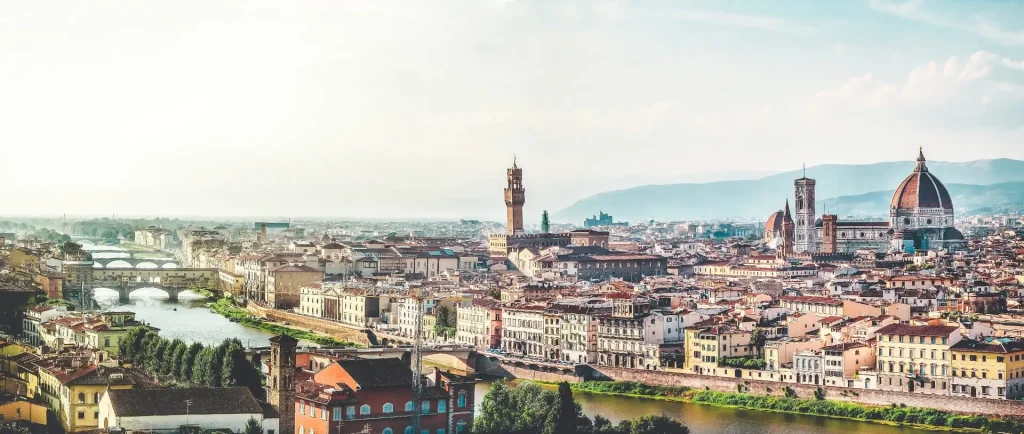
Particularly in Florence, his birthplace, we can walk through the narrow streets of the historic center and the medieval quarter and find emblematic places in the Supreme Poet’s life.
One of these is the Dante’s House Museum. This is where the poet was born and spent his childhood years. Today, the museum not only preserves everything pertaining to the life of Dante Alighieri, it also seeks to illustrate aspects of Florentine life during the Middle Ages.
Continuing our journey through the historic center, a few steps from his birthplace we come to the church of Santa Margherita dei Cerchi. Also known as “Dante’s Church“, this was the Alighieri family’s place of worship, and where the poet formalized his arranged marriage with Gemma Donati. Some sources maintain that the remains of Dante’s muse Beatrice rest in this church; others claim that she was buried in the Basilica di Santa Croce. The church is also thought to be where the lovers’ first meeting took place.
Turning the corner, we pass in front of Palazzo Portinari Salviati, better known as Beatrice’s House. Unfortunately, it’s not open to visitors, as the building has been converted into luxury apartments.
Exploring Palazzo Vecchio
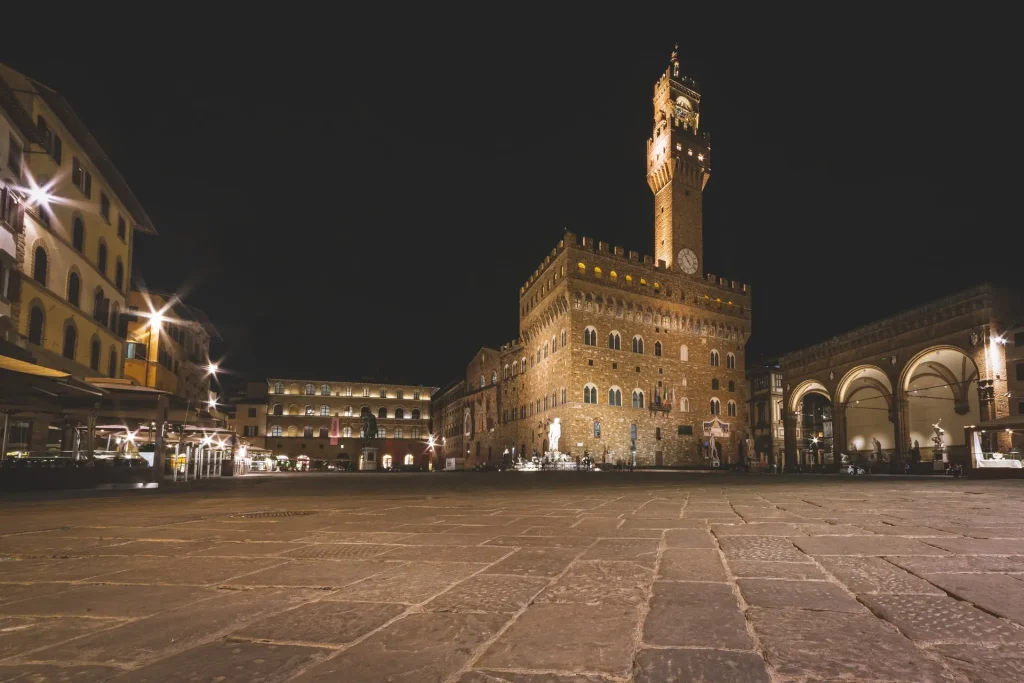
Another unmissable visit is to Palazzo Vecchio, perhaps accompanied by a tour guide who will take you through the various rooms of this magnificent symbol of the Florentine Republic. Here you can contemplate the famous death mask, a reproduction of the poet’s face that commemorates Dante Alighieri and the contribution he made to the city of Florence.
If you’re near Florence Cathedral, you can visit the Baptistery of San Giovanni, where little Dante was baptized in 1266. This place is also mentioned several times in the verses of the Divine Comedy.
What’s more, on the wall of a building to the right of the cathedral, there’s a marble memorial plaque engraved with the words “Dante’s Stone“. It’s said that the poet could often be found sitting on a rock here, absorbed in thought.
The empty tomb in Santa Croce
Another key place in Dante Alighieri’s life is the Basilica of Santa Croce. In the square in front of the church stands an imposing marble statue depicting an angry-faced Dante Alighieri.
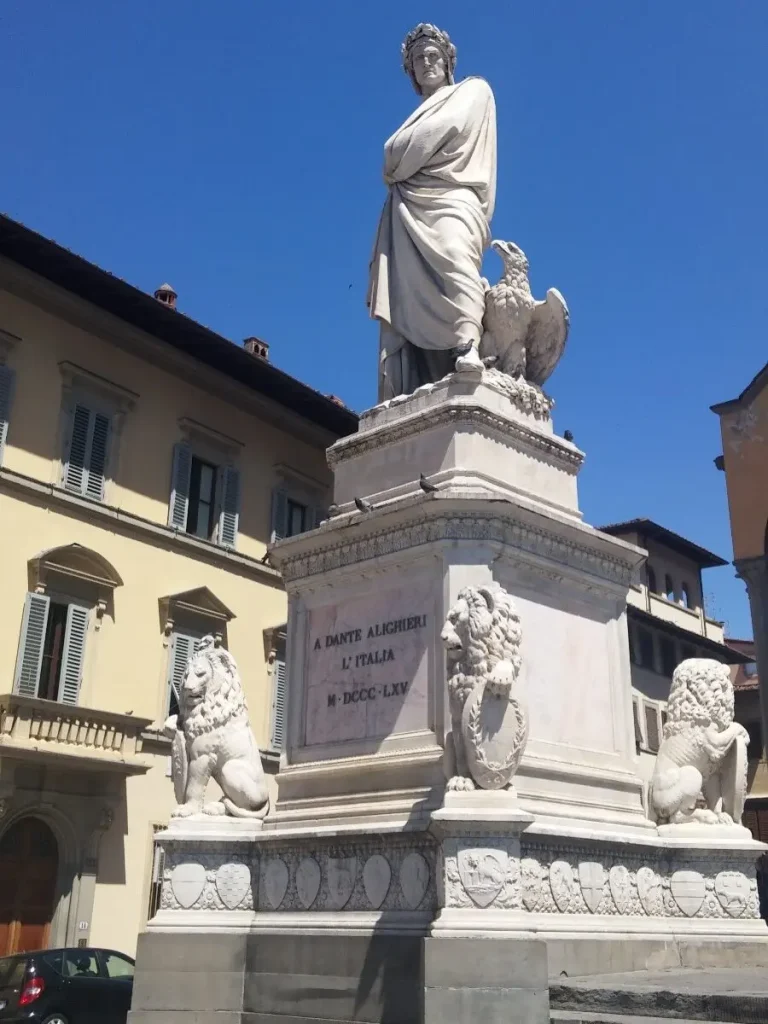
Florentines longed for Dante to return to his birthplace after his exile. However, he didn’t make it back in time, as he took his last breath in Ravenna. Many people asked that his body be returned to the city to lie in the Basilica of Santa Croce. Inside the Basilica today, we can see a magnificent memorial tomb in his honor, still empty and awaiting his remains.
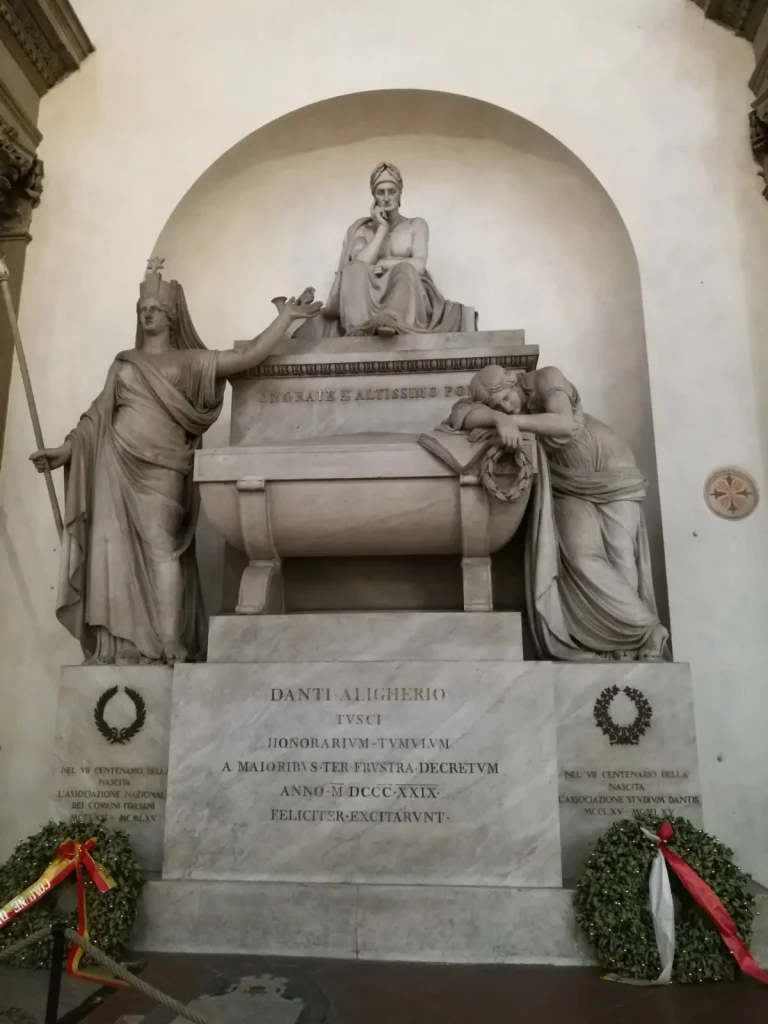
We recommend joining a guided tour and, with the tour guide, you’ll have the opportunity to discover all the secrets of Santa Croce, a veritable hall of fame of illustrious Florentine figures.
Exile
As we mentioned, Dante Alighieri was exiled from his beloved Florence and found shelter with the rulers of some of Italy’s most beautiful and noble cities.
Verona is the city where he spent most time, a guest of Cangrande della Scala, lord of Verona and Dante’s patron. Most of the Divine Comedy was written in the city’s Biblioteca Capitolare. And in Veneto, specifically in the hills of Valpolicella, we find Tenuta Serego Alighieri, now an acclaimed winery where you can enjoy an exclusive guided tour with tasting. This place is named after the Supreme Poet; in fact, the estate was bought in 1353 by his son Pietro Alighieri, who had followed his father into exile in Verona. Today, Tenuta Serego Alighieri is thought to be the oldest winery in Valpolicella, as well as one of the finest. We also mentioned it in our article on the Wineries of Northern Italy, which you can find here.
Meanwhile Bologna, famous for its distinctive porticoes, was the noble city where Dante studied at Europe’s oldest university. Here he spent brief but repeated periods.
Despite his exiled status, Dante made several attempts to return to his beloved Fiorenza, but to no avail. In fact, Ravenna was the last home of the “fugitive Ghibellin” (as he was called, despite his support for the Guelphs), where he resided until his death in September 1321. If you visit the city today you can admire the Basilica of San Francesco, where his funeral was held, and the Tomb of Dante Alighieri, where his remains rest.
All the commemorative events
Despite the difficult times we’re all going through, numerous events were held to remember and celebrate Dante.
Among them, the website of the Ministry of Cultureoffered a busy schedule of commemorative events; the poet was also celebrated with theDante’s Italyproject, a collaboration between the Dante Alighieri Society and the Ministry of Culture aimed at promoting and exploring the places linked to the author of the Divine Comedy with itineraries that follow in Dante’s footsteps.
Categories
Art & Culture City Break Family Friendly Food & Wine Outdoor Rainy Day Romantic UncategorizedFeatured posts
-
Three days to fall in love with Florence
Art & Culture
-
Summer food and wine trip
Food & Wine
-
UNESCO sites in Piedmont
Art & Culture
